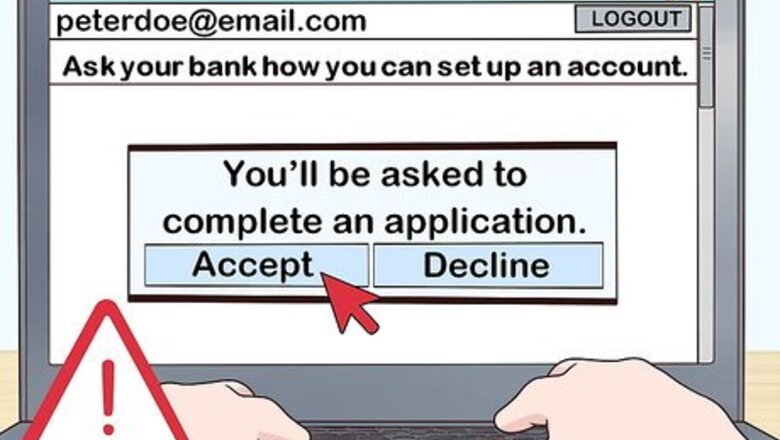
views
Deciding On Account Type

Consider accepting donations from family and friends only. Perhaps a friend needs funding for an expensive medical procedure. You could help by setting up a simple donation process. Ask your bank how you can set up an account. You’ll be asked to complete an application. You also may need to apply for a local business license. If so, your bank can help you apply for the license. The bank application will ask you to explain the purpose of your fundraising and how funds will be distributed. Most banks will require at least two co-signers on the account. The co-signers are authorized to make deposits and write checks to the beneficiary of the account. In addition to a business license, you may need to register as a charity through your city or state. Your bank can point you to the website where you can register. Simple donation accounts, however, don’t typically need to be formed as charitable organizations.
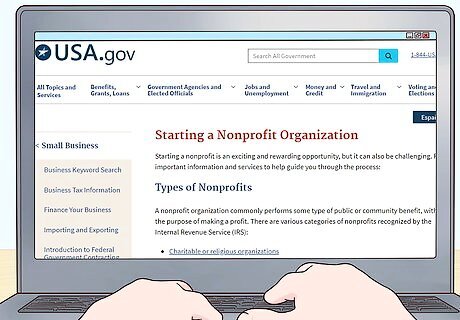
Consider soliciting the public for donations. If you want to expand your reach by asking the public for donations, you’ll need to register formally as a charitable organization. Registration requires you to get other people involved officially in your charity. Name officers for your charity. Officers include a president, treasurer and possibly a board of directors. While anyone can be an officer for your charity, you need people who are passionate about your mission. You also need people who have the skills to run an organization. Your treasurer, for example, should have a business background. Many officers also work as fundraisers. Your state will require you to set up a not-for-profit entity (NFP). Typically the process for establishing an NFP is overseen by the secretary of state’s office. Ask your bank about this process. Once you set up your charity through the state, you may be asked to submit periodic financial reports, probably annually. Those reports will list your charitable collections and the distributions you make to the beneficiary.
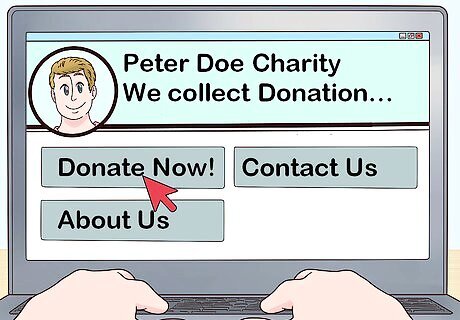
Use an online application for collecting donations. You can set up an online donation system to make contributing simple for your donors.
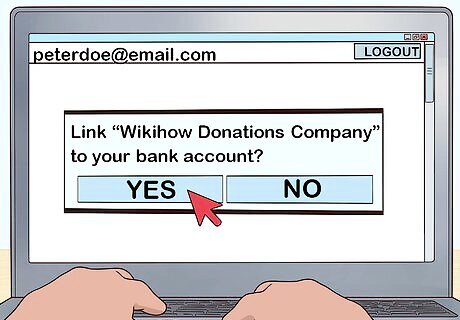
Prevent fraud. Regardless of how you accept donations, take steps to prevent fraud in your charitable donation system. There are many online companies you can use to accept and make payments. One of the largest is PayPal. To set up donations you’ll need to link the company to your bank account. That company will want to see the paperwork you completed for your bank and the state. Reconcile your bank account promptly. Reconcile your records with your bank statement as soon as you receive it. Statements can typically be instantly accessed online at the end of each accounting period. Reconciling your bank account quickly is the most effective way to prevent any fraudulent transactions in your account. Verify that all deposits have posted to the account. All withdrawals should be for legitimate account expenses, or they should be checks written to your beneficiary.

Use a crowdfunding site to find interested donors. Once you set up a bank account and connect it to PayPal, you can consider using a crowdfunding site to build interest in your cause or idea. Under certain conditions you can post your fundraising idea on a popular site, such as GoFundMe or Kickstarter. Crowdfunding is the process of raising small amounts of money from many individuals. A crowdfunding site is a great way to implement a fundraising campaign. Many charitable-minded people visit these sites looking for interesting ideas to fund. Typically donations are transmitted through PayPal or a similar application. GoFundMe is a good portal for starting a charitable drive. Kickstarter, on the other hand, is not geared toward charities. It targets creative people (writers, filmmakers, musicians and artists) looking to raise funds for personal projects.
Applying For Tax Exempt Status

Meet the requirements to be a tax-exempt organization. Donations to a tax-exempt organization may be tax-deductible for some taxpayers. To obtain this status, you must apply through the Internal Revenue Service (IRS). Tax-exempt status is based on the IRS tax code 501(c)(3). Your organization must be organized and operated exclusively for an exempt purpose. No private interest can benefit from your tax-exempt organization. A private interest refers to a shareholder of your organization, or any individual. If, for example, one of your officers sells products to your organization through his company, that officer would have a private interest.
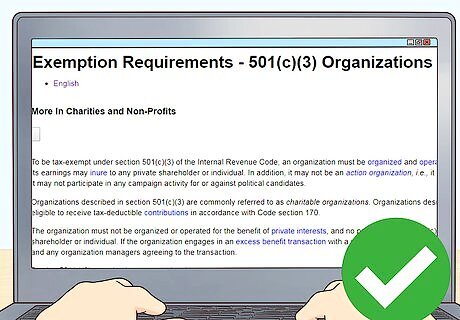
Comply with the definition of an exempt purpose in the IRS code. An applicant can meet the exempt purpose definition by forming many types of charities. You’ll find a list of the exempt purposes allowed by the IRS on their website. Your organization will meet the IRS exempt-purpose requirement if you meet the definition of a charity. For example, an organization formed to help the poor or underprivileged meets the definition. Charitable organizations that promote the advancement of religion, education, or science also meet the IRS definition of a charity. If your organization is formed to maintain a public building or monument, you meet the IRS definition.

Apply for tax-exempt status through the IRS. Your organization must have assumed the appropriate legal structure in order to comply with the IRS requirements for a charity. In most cases your entity must be formed as a trust, a corporation or an association. The IRS defines each of these terms and provides written directions for applying for each structure. Consult with an attorney and an accountant for help in forming your charity. IRS Publication 557 explains each of the legal forms you can use for tax-exempt status. Publication 4220 can help you apply for 501(c)(3) status through the IRS.




















Comments
0 comment